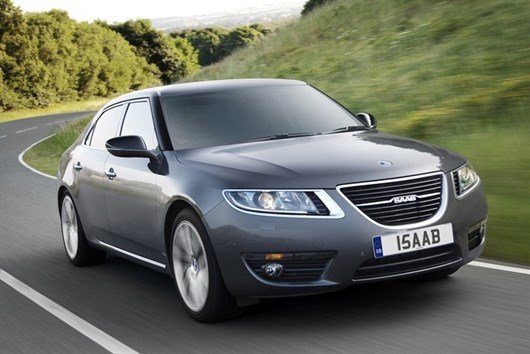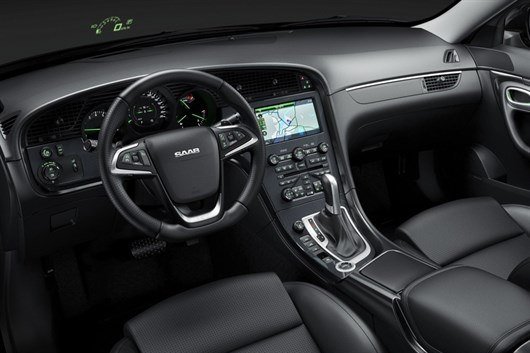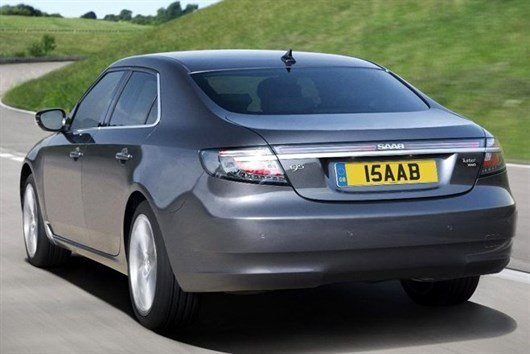Future Classic Friday: Saab 9-5

There were many corporate victims of the global financial crisis in 2007-2008 - Lehmann Brothers, Northern Rock and Royal Bank of Scotland to name but a few. In automotive terms, though, it was the American 'big three' - Ford, Chrysler and General Motors. These companies had to swallow the bitterest of pills. Barack Obama's famous auto industry 'bailout' saved the industry, but it didn't save all of its brands, leaving some very famous names in the weeds.
Of the three, it was GM that came off worst, having to go cap in hand to the government for $37 billion worth of bankruptcy protection support. With that came the immediate closure of Hummer, Pontiac and Saturn, while the US giant also put its European brands, Opel-Vauxhall and Saab, up for sale.
The Opel and Vauxhall brands were saved from a takeover at the eleventh hour (only to be sold in 2017 to PSA Peugeot-Citroen), while Saab was actively marketed to Chinese and European suitors.
The bargaining chip within all this was the new 9-5, based on GM's Epsilon II platform, which also underpinned the new Opel-Vauxhall Insignia, Buick Regal and Chevrolet Impala. It was the most technologically advanced Saab ever, and the first to see true levels of design and engineering investment from GM before its troubles reached a head. Indeed, before GM filed for Chapter 11 bankruptcy protection, there were high hopes that it would be the car that would put Saab back on the map.

The new 9-5 was revealed at the 2009 Frankfurt Motor Show, with obvious influences from its forebears. Its scalloped rear screen, rotund flanks and trapezoidal grille were clear references to the 99 and 900 that made Saab famous, while the interior drew heavily on Saab's aircraft influences, complete with head-up display on the high-end models.
Pre-production pilot build cars rolled off the Trollhättan production line from November 2009, and were enough to convince Dutch supercar maker Spyker to approach GM with a deal. GM would continue to supply intellectual property, manufacturing licences and parts support to Saab for an indefinite period, and Spyker would take over the brand and the factory, 50 miles north of Gothenburg.
The deal was concluded in January 2010, with production officially commencing in March 2010. The new 9-5 was well-received, too. Its styling was retro-inspired but ultra-modern, it was comfortable, well-engineered and dynamically leagues ahead of the 9-5 it replaced. With the right level of marketing support and investment, the 9-5 could well have been the car to take the fight to the German executive brands.
Alas, it wasn't to be, and Spyker's financiers didn't have the same belief in Saab's future as its charismatic CEO, Victor Muller. This led to plans to develop a 9-3 replacement stuttering to a halt, although the estate version of the 9-5, known as the SportCombi, remained in development, ahead of its official reveal at the 2011 Geneva Motor Show.

Although a few SportCombis were made, including a handful of RHD models, the model never officially went on sale, although it did make it as far as a press launch, where it was as well received as the saloon.
Alas, just weeks after the Geneva Motor Show, the lines at Trollhättan ground to a halt. Disagreements with some suppliers over credit terms meant that Saab was unable to get - or indeed pay for - some of the parts needed to build 9-5s, and there were hundreds of cars that sat partially completed in the factory grounds. It was a sad end for one of the most eccentric, engaging and enthusiastic car brands in motoring history, though there are some that believe Saab will one day rise again.
Until then, the 9-5 remains nothing more than a fascinating footnote in the brand's 67-year history. A car that could and should have been Saab's saviour, but in the end was too little, too late.
What's an even bigger tragedy is that the 9-5 was a terrific car, and probably the only Saab developed during the troubled 'GM years' that truly embraced the brand's DNA. As the last true Saab, and one that was only built for a year, so is therefore extremely rare, the third-generation 9-5 has all the hallmarks of a future classic - albeit for the saddest of reasons.

Comments
Compare classic car insurance quotes and buy online. A friendly service offering access to a range of policies and benefits.


 Craig Cheetham
Craig Cheetham
 NEC classic motor show 2020 postponed due to Covid 19 concerns
NEC classic motor show 2020 postponed due to Covid 19 concerns
 Classic car auction house Coys goes into administration
Classic car auction house Coys goes into administration
 Motor racing great Sir Stirling Moss dies aged 90
Motor racing great Sir Stirling Moss dies aged 90
 Alfa Romeo anniversary races set for Silverstone
Alfa Romeo anniversary races set for Silverstone
 Government to make E5 fuel available for classic owners
Government to make E5 fuel available for classic owners
 Plans to introduce cleaner fuel could damage more than a million classic cars
Plans to introduce cleaner fuel could damage more than a million classic cars
 Top 10: Classic cars from the Gulf motor racing heritage collection
Top 10: Classic cars from the Gulf motor racing heritage collection





UH2L Patel on 8 July 2017
Great post. I have a 2010 9-5 Aero. It drives amazingly well and looks modern and like nothing else even today. One correction though, here in the US, the car was offered for 2 model years, 2010 and 2011.Peter McGuire on 15 July 2017
SAAB's demise was no doubt sped on it's way by the widely lampooned 9.2X "Saabaru" and the hideous 9.7X SUV. Sad!Ian Sarginson on 4 February 2021
Ian Sarginson.Being a Saab owner from a 1964 Saab 96 Sport, 1967 Sonnet 2 , 1974 Sonnet 3, 1973 Saab 96 V4, 1981 Saab 99 2 dr Turbo, Saab 9000, etc etc. Still have most of them!!
I love this last Saab. What a great car. A classic for the future.
Add a comment